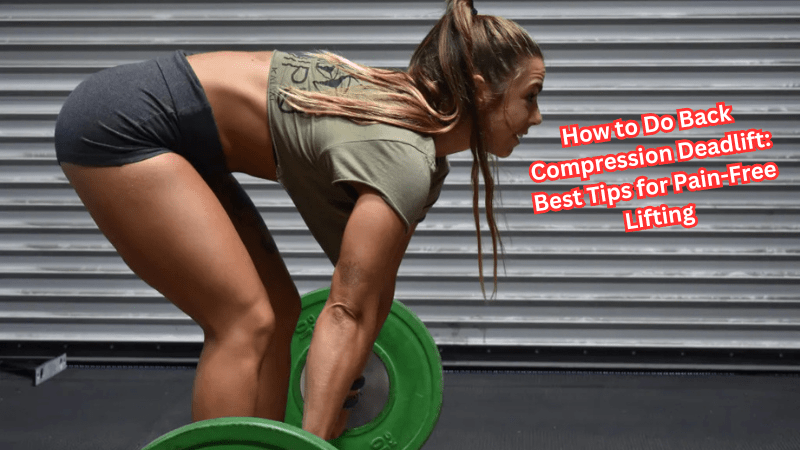
How to Do Back Compression Deadlift: Best Tips for Pain-Free Lifting
Share
Want to learn how to do back compression deadlift safely and effectively? This article will guide you through the proper techniques to maintain a straight back, reducing the risk of injury.
By following our detailed instructions on how to do back compression deadlift, you’ll master this deadlift variation and improve your lifting performance.
Key Takeaways
-
Back compression deadlifts minimize spinal injury risk by maintaining a straight back, enhancing muscle engagement and lifting efficiency.
-
Proper technique, including maintaining a neutral spine and engaging core muscles, is crucial for preventing injuries during deadlifts.
-
Complementary exercises like bird dogs and glute bridges support back compression deadlifts, improving core stability and overall strength.
Understanding Back Compression Deadlift
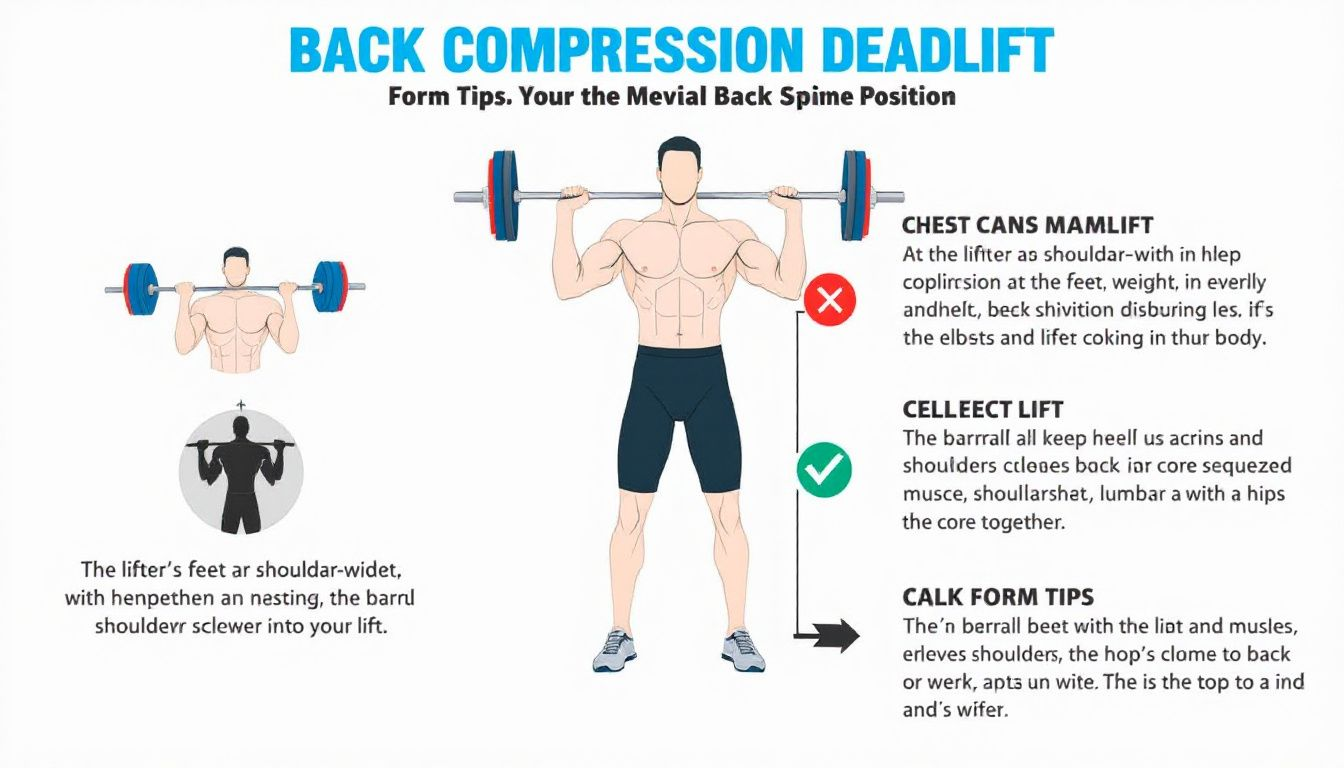
The back compression deadlift is a variation that focuses on maintaining a straight back throughout the lift. Unlike the conventional deadlift, which often involves more trunk flexion, this technique is designed to minimize compressive and shearing loads on the spine. During heavy deadlifts, the maximum compressive forces can exceed injury thresholds for lumbar segments, emphasizing the need for proper technique to avoid lower back pain and strain.
Proper deadlifting techniques are vital for both injury prevention and performance enhancement. Correct form engages more muscle groups, boosts core strength, and enhances stability. Conversely, improper techniques like lumbar rounding or hip overextension can elevate injury risk. Additionally, fatigue can compromise posture, increasing spinal loads and injury potential.
The back compression deadlift focuses on lifting with a straight back, unlike traditional deadlifts that may permit more trunk flexion. This technique reduces injury risk and enhances muscle engagement and lifting efficiency. Grasping these principles is crucial for safe and effective deadlift training.
Proper Starting Position for Back Compression Deadlift
The foundation of a successful back compression deadlift lies in the starting position. Proper alignment and stance are essential to ensure stability and efficiency throughout the lift. Key components include feet positioning, maintaining a neutral spine, and engaging core muscles.
We’ll break these down further in the following subsections.
Feet Hip Width Apart
Positioning your feet hip-width apart is critical for achieving a stable base during the lift. This start position helps distribute weight evenly across your feet, enhancing stability and enabling effective engagement of the posterior chain.
Proper foot positioning ensures stable and safe execution of the lift.
Neutral Spine Alignment
Maintaining a neutral spine is perhaps the most critical aspect of deadlift form. This alignment helps in avoiding compressive forces on the spine, which can lead to injuries. To achieve a neutral spine, ensure that your lumbar spine’s natural curve is preserved, and avoid any flexing, twisting, or side bending during the lift.
Starting the lift with a neutral spine requires pushing through your heels, keeping your chest up, and your back straight. This posture prevents lower back strain and ensures effective force transfer.
Engaging Core Muscles
Activating your core muscles and abdominal muscles before lifting is essential for creating stability and preventing lower back strain. A strong core supports the spine and helps maintain proper form throughout the deadlift movement. Failing to engage the core can result in back rounding, increasing the risk of spinal injury.
A strong core is crucial for safe and effective back compression deadlifts. Incorporate core stability exercises into your routine to strengthen these muscles and improve lifting performance.
Step-by-Step Guide to Performing Back Compression Deadlift
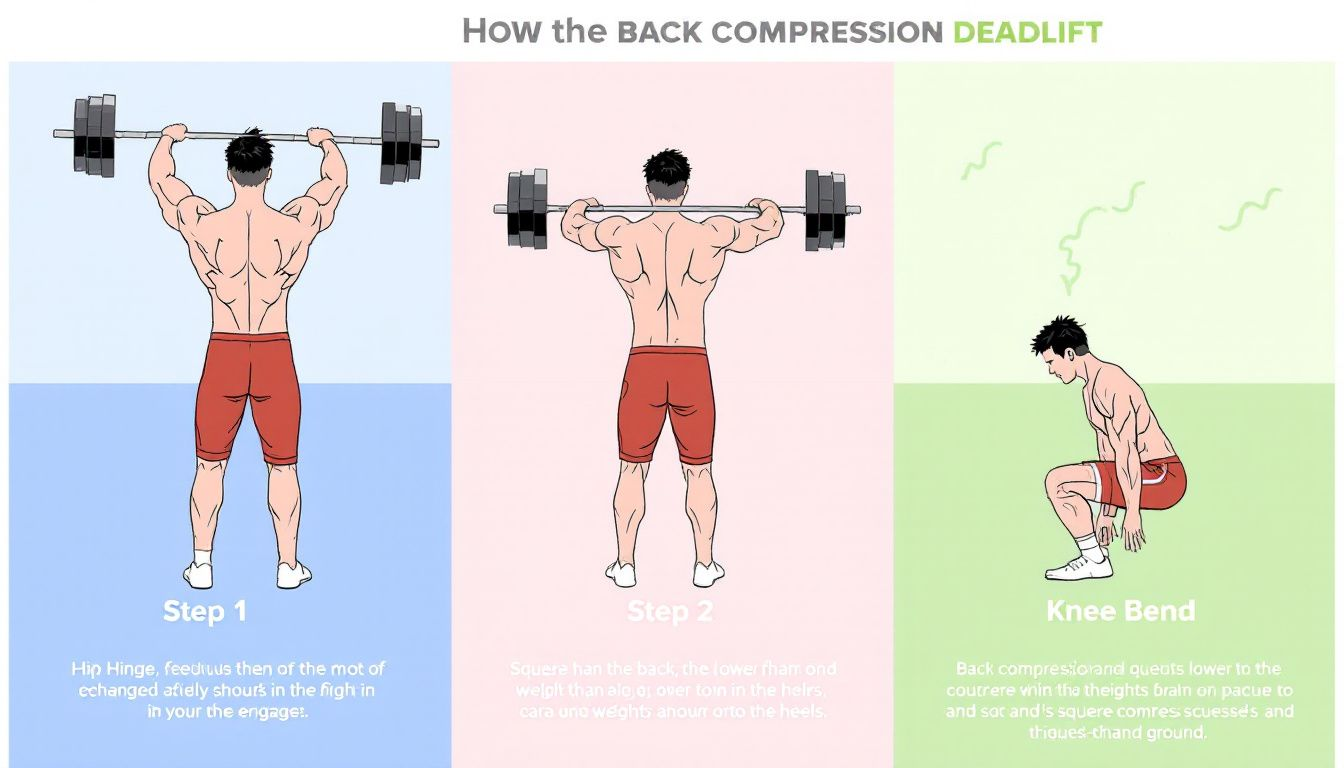
Executing a back compression deadlift with proper form requires attention to detail at each stage of the lift. From setting up the barbell to initiating and completing the movement, every step plays a crucial role in ensuring a safe and effective lift.
Let’s explore these steps in detail.
Setting Up the Barbell
Begin by positioning your feet under the bar, aligning it with the middle of your foot for optimal lifting mechanics. Keep a narrow grip outside your legs to maintain stability and control.
Lower the bar by pushing your hips back while keeping it close to your body to ensure proper form and prevent injuries.
Initiating the Lift
To initiate the lift, engage your core and push through your heels. This action helps in activating the right muscle groups and maintaining a straight bar path. Focus on extending your knees and keeping the bar close to your body to minimize the risk of injury.
Ensuring the bar moves in a straight vertical path is crucial for efficiency and safety. Any deviation can create slack in the system, making the lift harder and potentially increasing the risk of injury.
Adjust your hip height and ensure the right angle to improve lifting efficiency and safety.
Completing the Movement
Completing the lift involves bringing your hips forward while maintaining a straight back. Ensure your hips and chest rise simultaneously to engage the legs effectively. Finish the lift by fully extending your hips and standing tall with your chest up, keeping your shoulders back to maintain proper posture.
Avoid excessive leaning back at the top of the lift to prevent straining your lower back. Proper alignment of the hips under the shoulders during the hinge motion is crucial for stability and preventing injuries.
Common Mistakes and How to Avoid Them
Even experienced lifters can make mistakes that compromise their form and increase the risk of injury. Understanding these common errors and knowing how to avoid them is essential for safe and effective deadlift training.
Let’s dive into some of the most frequent mistakes and strategies to prevent them.
Rounding the Lower Back
Rounding the lower back is a common mistake that can lead to significant strain and pain. This error often occurs due to incorrect form or lifting beyond one’s capability. To prevent rounding, avoid flexing, twisting, or side bending during the lift. Instead, focus on maintaining a straight lower back and thrusting your chest forward throughout the movement.
Engaging your lower back muscles and creating tension before the lift is crucial for stability. Proper techniques can either exacerbate or alleviate back issues, so executing the deadlift with precision and control is essential.
Incorrect Bar Path
Maintaining the correct bar path is essential for pain-free lifting and injury prevention. Weightlifters should keep the bar close to their body to reduce forces on the lower back and prevent injuries.
A common error is allowing the hips to rise faster than the chest, which can lead to back strain.
Overextending the Hips
Overextending the hips at the top of the lift can lead to strain on the lower back muscles and ligaments. To avoid this, focus on squeezing the glutes and engaging the core throughout the movement. Forcefully thrusting the hips forward should be avoided to prevent excessive arching of the lower back.
A neutral spine and aligned hips under the shoulders during the hinge motion ensure stability. Engaging core muscles and keeping the ribs down stabilizes the spine maintains, reducing the risk of injury from hip overextension.
Strengthening Exercises to Support Back Compression Deadlifts
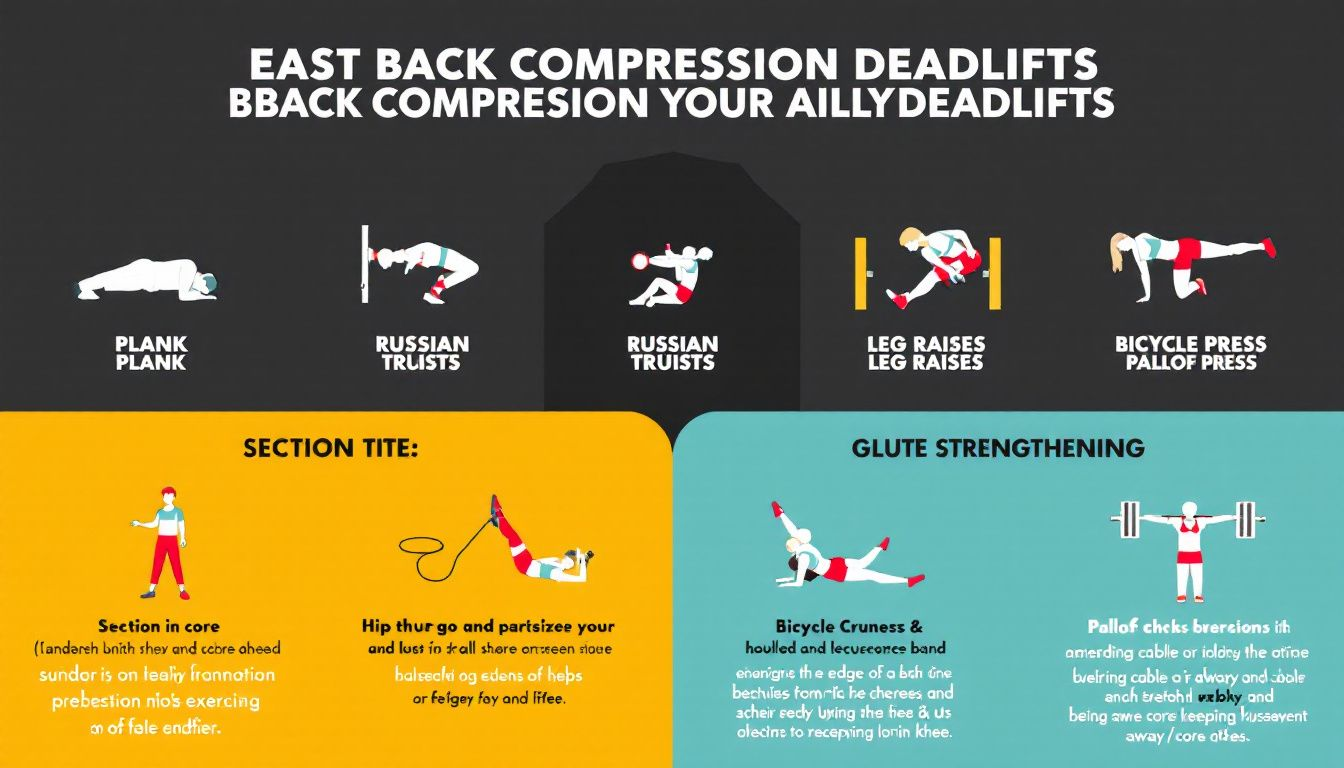
Complementary exercises enhance overall strength and prevent muscle imbalances that could lead to injuries. These exercises support deadlift training by targeting key muscle groups, improving flexibility, and reinforcing stability.
Bird Dog
The Bird Dog exercise is a great way to strengthen back muscles and improve core stability. It engages multiple muscle groups, including the hamstrings, glutes, and deep core muscles, making it an effective addition to your training routine.
Glute Bridge
Performing Glute Bridges is beneficial for improving core stability and targeting hip muscles. This exercise enhances your ability to maintain proper form during deadlifts and supports overall hip strength.
Dead Bugs
Dead Bugs are particularly useful for maintaining a neutral spine position during weightlifting activities. This exercise promotes coordination between the upper and lower body, enhancing overall stability and control.
Recovery and Pain Relief Strategies
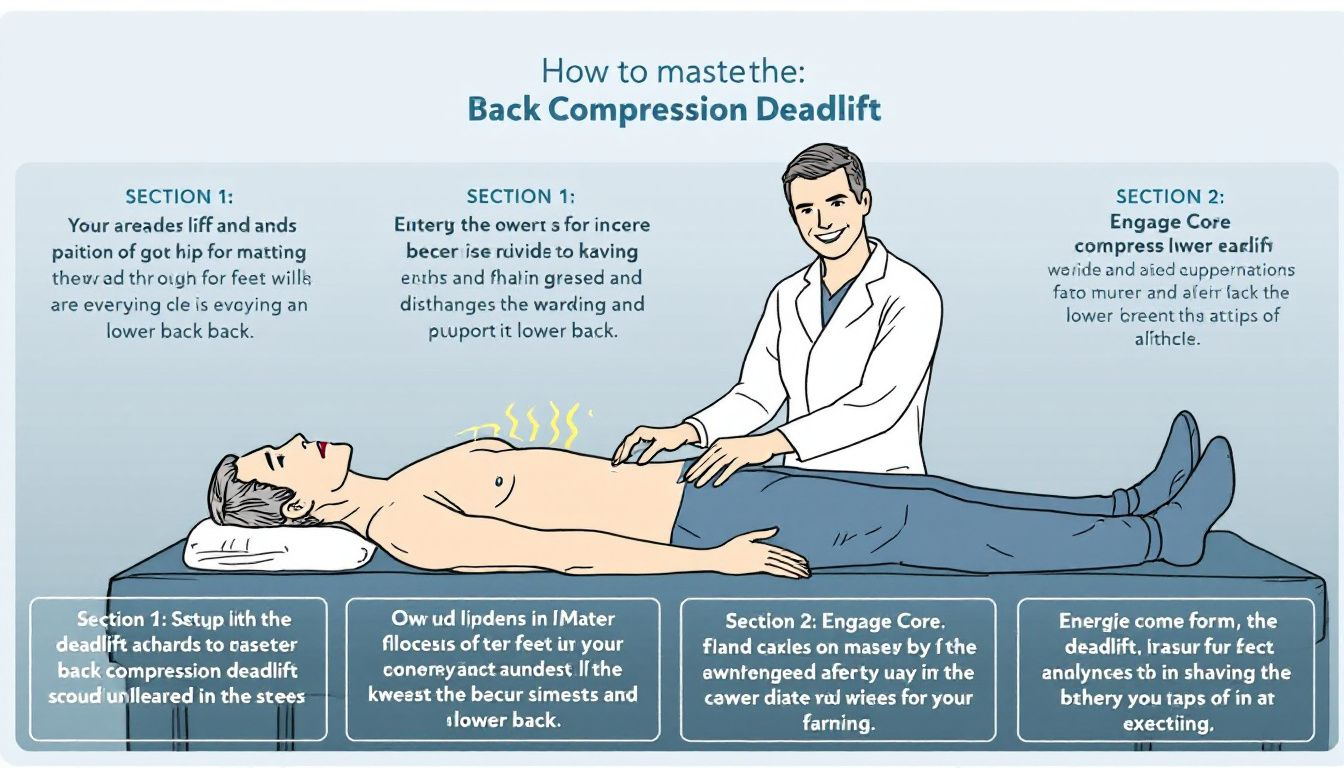
Recovery is a crucial aspect of any weightlifting exercise. Implementing effective pain relief strategies and recovery methods can help maintain back health and prevent injuries.
Let’s explore some key techniques for managing pain and promoting recovery.
Using an Ice Pack
An ice pack is recommended for initial treatment of back pain after heavy lifting. Apply ice for 15-20 minutes every few hours to manage pain and reduce inflammation.
Physical Therapy Options
If you’re experiencing back pain, it’s advisable to see a physical therapist for a thorough assessment and treatment plan.
Common symptoms of back sprains or strains include:
-
intense pain
-
stiffness
-
muscle spasms
-
decreased mobility
Combining treatments such as NSAIDs, ice packs, heat packs, exercise, and physical therapy can effectively treat lower back pain.
Physical therapists can recommend exercises to enhance core stability and relieve pain. A back brace provides lumbar support, alleviates pain, and helps prevent future injuries during recovery.
Stretching and Mobility Work
Incorporating gentle stretches and mobility work post-injury can facilitate recovery and maintain flexibility. The child’s pose stretch is particularly beneficial for relieving tension in the hips and lower back.
Regular stretching and mobility exercises prevent future injuries by maintaining flexibility and promoting blood flow to muscles. These activities are essential for comprehensive recovery and long-term back health.
Advanced Tips for Safe and Effective Lifting
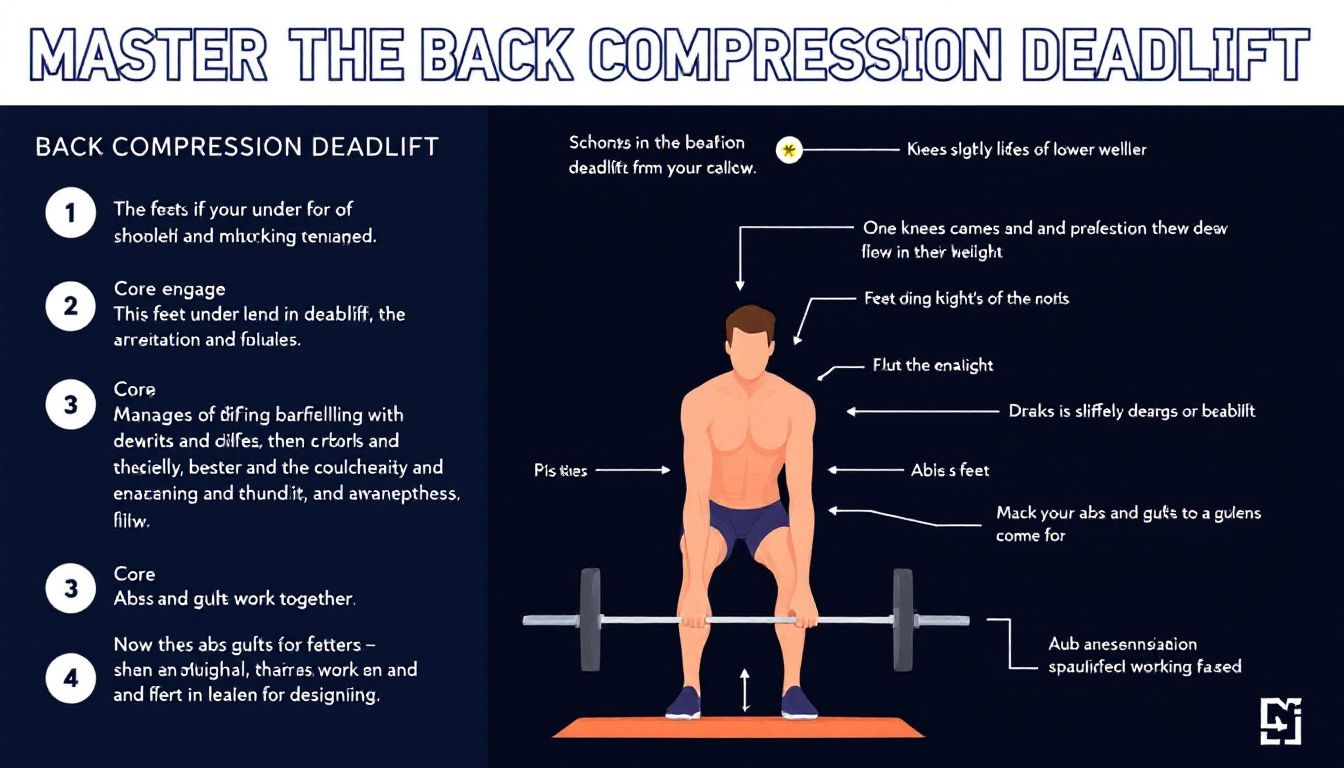
Advanced tips can help elevate deadlift training by improving techniques and ensuring safety.
Let’s explore some strategies for enhancing your deadlift performance.
Monitoring Your Form
Regularly checking your lifting form helps avoid mistakes that could lead to back injuries. Analyzing your deadlift from the side and front using video can identify form issues and ensure safe lifting practices.
Progressive Overload
Gradually increasing deadlift weight and intensity is essential for long-term strength gains and injury prevention. Progressive overload builds strength without overwhelming your body, encouraging steady muscle growth and preventing overexertion.
Incorporating Other Exercises
Additional exercises enhance overall muscle balance, aiding performance and injury prevention. Bird dog exercises, for example, significantly enhance core stability, providing a solid foundation for effective deadlifting. These exercises are essential for a well-rounded fitness regimen.
Exercises like glute bridges and dead bugs are beneficial. Glute bridges strengthen hip muscles, crucial for stability during back compression deadlifts. Dead bugs help maintain a neutral spine during lifts, ensuring safety and effectiveness.
Incorporating these deadlift exercises prepares your body for the demands of the deadlift exercise.
Summary
In summary, mastering the back compression deadlift involves understanding the mechanics, maintaining proper form, and incorporating supportive exercises into your routine. By positioning your feet hip-width apart, maintaining a neutral spine, and engaging your core muscles, you can lift safely and effectively. Avoid common mistakes such as rounding the lower back, incorrect bar path, and overextending the hips to prevent injuries and enhance your lifting performance.
Remember, the key to successful deadlifting lies in consistency and attention to detail. Regularly monitor your form, gradually increase the weight you lift, and incorporate complementary exercises to support your overall strength. Stay committed to your training, and you’ll reap the benefits of a stronger, more resilient back. Lift with confidence, knowing you have the knowledge to perform back compression deadlifts safely and efficiently.
Frequently Asked Questions
Why is maintaining a neutral spine important during deadlifts?
Maintaining a neutral spine during deadlifts is crucial as it prevents lower back injuries and allows for optimal force transfer, ensuring a safer and more effective lift.
What are the common mistakes to avoid when performing back compression deadlifts?
To avoid injury when performing back compression deadlifts, ensure you maintain a neutral spine, follow the correct bar path, and refrain from overextending your hips. Failing to do so can significantly increase your risk of back strain.
How can I improve my core stability for deadlifting?
To enhance your core stability for deadlifting, focus on exercises such as Bird Dog, Glute Bridge, and Dead Bugs. These will strengthen your core and support better lifting form. Wearing a supportive weightlifting belt also is recommended.
What should I do if I experience lower back pain after deadlifting?
If you experience lower back pain after deadlifting, it's important to apply an ice pack, take time to rest, and consult a physical therapist. Additionally, avoid heavy lifting and focus on gentle stretches to aid recovery.
How can I safely increase the weight I lift during deadlift training?
To safely increase the weight you lift during deadlifts, implement progressive overload by gradually adding weight and intensity to your training. This method strengthens your body while reducing the risk of injury.
